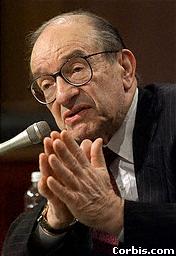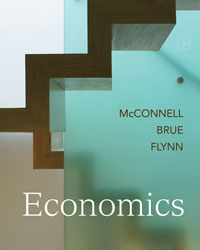Economics (McConnell), 18th EditionChapter 33:
Interest Rates and Monetary PolicyOrigin of the Idea <a onClick="window.open('/olcweb/cgi/pluginpop.cgi?it=gif::::/sites/dl/free/0025694212/124310/origins_image.gif','popWin', 'width=70,height=90,resizable,scrollbars');" href="#"><img valign="absmiddle" height="16" width="16" border="0" src="/olcweb/styles/shared/linkicons/image.gif"> (1.0K)</a> <a onClick="window.open('/olcweb/cgi/pluginpop.cgi?it=gif::::/sites/dl/free/0025694212/124310/origins_image.gif','popWin', 'width=70,height=90,resizable,scrollbars');" href="#"><img valign="absmiddle" height="16" width="16" border="0" src="/olcweb/styles/shared/linkicons/image.gif"> (1.0K)</a> | 33.1 Liquidity Preference |  <a onClick="window.open('/olcweb/cgi/pluginpop.cgi?it=gif::::/sites/dl/free/0025694212/124310/origins_image.gif','popWin', 'width=70,height=90,resizable,scrollbars');" href="#"><img valign="absmiddle" height="16" width="16" border="0" src="/olcweb/styles/shared/linkicons/image.gif"> (1.0K)</a> <a onClick="window.open('/olcweb/cgi/pluginpop.cgi?it=gif::::/sites/dl/free/0025694212/124310/origins_image.gif','popWin', 'width=70,height=90,resizable,scrollbars');" href="#"><img valign="absmiddle" height="16" width="16" border="0" src="/olcweb/styles/shared/linkicons/image.gif"> (1.0K)</a> | 33.2 Tools of Monetary Policy |  <a onClick="window.open('/olcweb/cgi/pluginpop.cgi?it=gif::::/sites/dl/free/0025694212/124310/origins_image.gif','popWin', 'width=70,height=90,resizable,scrollbars');" href="#"><img valign="absmiddle" height="16" width="16" border="0" src="/olcweb/styles/shared/linkicons/image.gif"> (1.0K)</a> <a onClick="window.open('/olcweb/cgi/pluginpop.cgi?it=gif::::/sites/dl/free/0025694212/124310/origins_image.gif','popWin', 'width=70,height=90,resizable,scrollbars');" href="#"><img valign="absmiddle" height="16" width="16" border="0" src="/olcweb/styles/shared/linkicons/image.gif"> (1.0K)</a> | 33.4 Taylor rule |
 <a onClick="window.open('/olcweb/cgi/pluginpop.cgi?it=gif::::/sites/dl/free/0025694212/124310/origins_image.gif','popWin', 'width=70,height=90,resizable,scrollbars');" href="#"><img valign="absmiddle" height="16" width="16" border="0" src="/olcweb/styles/shared/linkicons/image.gif"> (1.0K)</a> <a onClick="window.open('/olcweb/cgi/pluginpop.cgi?it=gif::::/sites/dl/free/0025694212/124310/origins_image.gif','popWin', 'width=70,height=90,resizable,scrollbars');" href="#"><img valign="absmiddle" height="16" width="16" border="0" src="/olcweb/styles/shared/linkicons/image.gif"> (1.0K)</a> | 33.1 Liquidity Preference |
Liquidity preference refers to the desire to hold money. According to John Maynard Keynes (1883-1946), there are three primary motives for holding money, other than to earn interest. The first is the transactions motive, where people hold money to use for regular purchases. The second is the precautionary motive, where money available for unanticipated expenditures. Third is the speculative motive, where money is held until better opportunities become available. Such opportunities would include higher interest rates on interest-bearing financial assets or lower prices for stocks. These motives for holding money form the basis for the demand for money, or liquidity preference. The interaction of the supply of and demand for money determine the equilibrium interest rate.
John Maynard Keynes was, arguably, the most influential economist of the 20th century. His seminal contributions to macroeconomic theory, his philosophical shift from the conservative neoclassical mainstream in economics, and the sheer number of economists and policy-makers who bore his banner, all serve to make Keynes a leading economic figure.
Keynes was destined to a life of intellectual pursuits from the very beginning. His mother served as a justice of the peace, an alderwoman, and the mayor of Cambridge. His father, John Neville Keynes, was an accomplished logician and political economist. John Maynard Keynes studied at Cambridge under the guidance of prominent economists Alfred Marshall (1842-1924) and A.C. Pigou (1877-1959).
Following his studies at Cambridge, he became editor of the Economic Journal, and successfully managed the investments of the Royal Economic Society, its publisher, and King's College of Cambridge, as well as his own. Keynes was a speculator, but interestingly, had this to say about speculators:
Speculators may do no harm as bubbles on a steady stream of enterprise. But the position is serious when enterprise becomes the bubble on a whirlpool of speculation. When the capital development of a country becomes a by-product of the activities of a casino, the job is likely to be ill-done. The measure of success attained by Wall Street, regarded as an institution of which the proper social purpose is to direct new investment into the most profitable channels in terms of future yield, cannot be claimed as one of the outstanding triumphs of laissez-faire capitalism – which is not surprising, if I am right in thinking that the best brains of Wall Street have been in fact directed towards a different object.(1) |  <a onClick="window.open('/olcweb/cgi/pluginpop.cgi?it=jpg::::/sites/dl/free/0025694212/124320/origin13_1.jpg','popWin', 'width=354,height=450,resizable,scrollbars');" href="#"><img valign="absmiddle" height="16" width="16" border="0" src="/olcweb/styles/shared/linkicons/image.gif"> (160.0K)</a> <a onClick="window.open('/olcweb/cgi/pluginpop.cgi?it=jpg::::/sites/dl/free/0025694212/124320/origin13_1.jpg','popWin', 'width=354,height=450,resizable,scrollbars');" href="#"><img valign="absmiddle" height="16" width="16" border="0" src="/olcweb/styles/shared/linkicons/image.gif"> (160.0K)</a> |
Keynes was a prolific writer and a prominent social and political figure. He was the main representative of the British Treasury at the peace conference after World War I, given the power to speak for the chancellor of the exchequer. He was highly critical of the Paris negotiations and the eventual Treaty of Versailles, causing him to resign his position in 1919 and begin writing The Economic Consequences of the Peace, published in 1920. In this work he predicted that the reparations imposed on Germany were excessive and would lead to political and economic conditions conducive to future armed conflict. He also served as trustee of the National Gallery, chairman of the Council of the Encouragement of Music and the Arts, chairman of the Nation and New Statesman magazines, and chairman of the National Mutual Life Assurance Society. He organized the Camargo Ballet (his wife, Lydia Lopokova, was a renowned star of the Russian Imperial Ballet), and built the Arts Theatre at Cambridge.
Keynes published The End of Laissez-Faire in 1926. While not his best known work, it did clearly articulate his feelings about capitalism and establish his philosophy that government involvement was necessary to bring about long term economic security. Keynes believed laissez-faire capitalism resulted in significant inequalities of wealth, excessive unemployment, and inefficiency:
Yet the cure lies outside the operations of individuals; it may even be to the interest of individuals to aggravate the disease. I believe that the cure for these things is partly to be sought in the deliberate control of the currency and of credit by a central institution, and partly in the collection and dissemination on a great scale of data relating to the business situation... These measures would involve Society in exercising directive intelligence through some appropriate organ of action over many of the inner intricacies of private business, yet it would leave private initiative unhindered...
Devotees of Capitalism are often unduly conservative, and reject reforms in its technique, which might really strengthen and preserve it, for fear that they may prove to be first steps away from Capitalism itself... For my part, I think that Capitalism, wisely managed, can probably be made more efficient for attaining economic ends than any alternative system yet in sight, but that in itself it is in many ways extremely objectionable. Our problem is to work out a social organization which shall be efficient as possible without offending our notions of a satisfactory way of life.(2)
Keynes' magnum opus was The General Theory of Employment, Interest, and Money, published in 1936. Writing in response to the Great Depression and the seeming impotence of classical economic theory to provide a solution, The General Theory articulates most of the economics of Keynes that would later evolve into the theories we recognize today.
The Economics of Keynes v. Keynesian Economics
It should be noted that while Keynes' writing provided inspiration for a number of economists who would come to be known as Keynesians, many of the well-known theories bearing his name were not developed by Keynes himself. For example, the IS-LM model, a Keynesian model you are likely to see in an intermediate macroeconomics course, was the result of work by Alvin Hansen (1887-1975) and John R. Hicks (1904-1989).
- John Maynard Keynes, The General Theory of Employment, Interest and Money (New York: Harcourt, Brace and World, 1936), p. 159. Reprinted by permission of Harcourt Brace and Company.
- John Maynard Keynes, The End of Laissez-Faire (London: Hogarth, 1926), p. 47-58.
Photograph courtesy of: (c)Corbis # CCO0075;
 <a onClick="window.open('/olcweb/cgi/pluginpop.cgi?it=gif::::/sites/dl/free/0025694212/124310/origins_image.gif','popWin', 'width=70,height=90,resizable,scrollbars');" href="#"><img valign="absmiddle" height="16" width="16" border="0" src="/olcweb/styles/shared/linkicons/image.gif"> (1.0K)</a> <a onClick="window.open('/olcweb/cgi/pluginpop.cgi?it=gif::::/sites/dl/free/0025694212/124310/origins_image.gif','popWin', 'width=70,height=90,resizable,scrollbars');" href="#"><img valign="absmiddle" height="16" width="16" border="0" src="/olcweb/styles/shared/linkicons/image.gif"> (1.0K)</a> | 33.2 Tools of Monetary Policy |
The familiar Federal Reserve tools of monetary policy (open market operations, changing reserve requirements, and changing the discount rate) were first advocated by Ralph George Hawtrey (1879-1975). A British treasury official and prolific author in the area of monetary economics, Hawtrey saw central bank policies as crucial to maintaining credit stability and reducing business cycle fluctuations. In severe downturns, however, Hawtrey recognized that even the easiest monetary policy had limited power to stimulate recovery. As an observer of the Great Depression, Hawtrey argued that the best way to deal with severe economic stagnation was to act during the boom periods, using a tight money policy to restrain spending and the over extension of credit. In Hawtrey's words:
Possible though it is to stop this [depression] by taking prompt measures to relax credit in time, far better would it be to regulate credit at all times in such a way that neither of the two vicious circles ever gets a serious hold. In quiet conditions credit responds easily to moderate upward and downward movements of the bank [interest] rate. If these movements were always initiated in time, the conditions need never be other than quiet in a monetary sense.
|  <a onClick="window.open('/olcweb/cgi/pluginpop.cgi?it=jpg::::/sites/dl/free/0025694212/124320/origin15_1.jpg','popWin', 'width=226,height=326,resizable,scrollbars');" href="#"><img valign="absmiddle" height="16" width="16" border="0" src="/olcweb/styles/shared/linkicons/image.gif"> (10.0K)</a> <a onClick="window.open('/olcweb/cgi/pluginpop.cgi?it=jpg::::/sites/dl/free/0025694212/124320/origin15_1.jpg','popWin', 'width=226,height=326,resizable,scrollbars');" href="#"><img valign="absmiddle" height="16" width="16" border="0" src="/olcweb/styles/shared/linkicons/image.gif"> (10.0K)</a> |
Some might argue that current Federal Reserve Chairman Alan Greenspan has taken Hawtrey's advice, especially in light of monetary policy in 1999 and 2000.
Photograph courtesy of: (c)Reuters New Media/Corbis  <a onClick="window.open('/olcweb/cgi/pluginpop.cgi?it=gif::::/sites/dl/free/0025694212/124310/origins_image.gif','popWin', 'width=70,height=90,resizable,scrollbars');" href="#"><img valign="absmiddle" height="16" width="16" border="0" src="/olcweb/styles/shared/linkicons/image.gif"> (1.0K)</a> <a onClick="window.open('/olcweb/cgi/pluginpop.cgi?it=gif::::/sites/dl/free/0025694212/124310/origins_image.gif','popWin', 'width=70,height=90,resizable,scrollbars');" href="#"><img valign="absmiddle" height="16" width="16" border="0" src="/olcweb/styles/shared/linkicons/image.gif"> (1.0K)</a> | 33.4 Taylor rule |
Problem: Suppose the current Federal funds rate is 4%. In each of the following scenarios, find the new target Federal funds rate if the Fed were to follow the Taylor rule for monetary policy. Also, describe the open market operations (Fed purchases or sales of securities) required to achieve the objective. Analyze each case separately. - GDP is 1 percent above its potential, but inflation is at its target rate of 2%.
- Inflation is at 4%, two percentage points above its target rate of 2%, but GDP is at its potential.
- GDP is 2% below its potential and inflation is 1% below its target rate of 2%.
| Answer: - The Taylor rule calls for the Fed to raise the real Federal funds rate by one-half a percentage point for each 1 percentage point of the GDP gap. In this example, the rule says to raise the rate from 4% to 4.5%. It could accomplish this by selling securities on the open market.
- The rule calls for a one-half percentage point increase in the real Federal funds rate for each one point by which inflation exceeds its target. In this case, the Fed would raise the real Federal funds target to 5%. It could accomplish this by selling securities.
- The Fed would lower its real Federal funds target by 1% owing to the GDP gap and one-half percent owing to the low inflation rate. The new target is then 4% – 1% – 0.5% = 2.5%. The Fed could accomplish this by buying securities on the open market.
|
 |  |



















